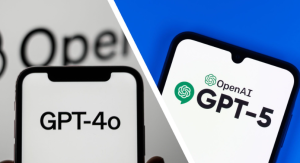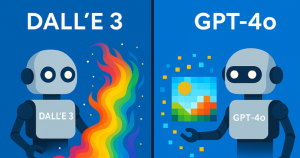
Struggling to create engaging video content on a tight deadline or budget? Imagine transforming your written ideas into polished videos in minutes, not days.
What You'll Learn:
- The core mechanics and essential concepts behind text-to-video AI.
- A curated list of the top AI video generation tools for 2025.
- Strategies for mastering prompt engineering to achieve desired video outcomes.
- Practical, real-world applications for leveraging AI in video creation.
- How to navigate ethical considerations and future trends in AI video.
Understanding Text to Video AI: Your New Creative Powerhouse
The digital landscape is increasingly visual, and video is king. However, the traditional video production process can be time-consuming, expensive, and require specialized skills. This is where Text to Video AI emerges as a revolutionary solution, democratizing video creation and empowering individuals and businesses alike.
What Exactly is Text to Video AI?
Text to Video AI refers to artificial intelligence systems designed to generate video content from textual input. This input can range from simple sentences and paragraphs to detailed scripts and storyboards. The AI analyzes the text, interprets its meaning, and then synthesizes corresponding visual elements, animations, and even audio to create a coherent video. It's essentially a bridge between language and visual storytelling, powered by sophisticated algorithms.
Key Concepts: Generative AI, Prompt Engineering, and Synthetic Media
To truly grasp Text to Video AI, understanding a few core concepts is crucial:
- Generative AI: This is the overarching technology that enables AI models to create new content, whether it's text, images, music, or in this case, video. Generative AI models learn patterns from vast datasets and use that knowledge to produce novel outputs.
- Prompt Engineering: This is the art and science of crafting effective text prompts to guide AI models. For Text to Video AI, a well-engineered prompt can dictate the style, mood, characters, actions, and overall narrative of the generated video. Mastering prompt engineering is key to unlocking the full potential of these tools. You can find foundational concepts for generative AI on resources like developer.mozilla.org's guide to AI.
- Synthetic Media: This term encompasses any media (images, audio, video) that is generated or significantly altered by AI. Text-to-video outputs are a prime example of synthetic media, offering new avenues for creative expression and communication.
How Text to Video AI Works: From Script to Screen
The process generally involves several stages:
1. Text Input: The user provides a script, a description, or a series of keywords.
2. Text Analysis: The AI processes the text, identifying key elements like objects, actions, emotions, and narrative flow.
3. Visual Synthesis: Using learned patterns, the AI generates visual assets (e.g., characters, backgrounds, props) and sequences them to match the text. This might involve creating original imagery or animating existing assets.
4. Audio Generation/Integration: The AI can generate voiceovers, background music, and sound effects, or allow for the integration of pre-recorded audio.
5. Rendering and Output: The final video is rendered and presented to the user in a usable format.
Top Text to Video AI Tools for 2025 in the US Market
The market for Text to Video AI tools is rapidly expanding, offering a range of options for different needs and budgets. Here are some of the leading contenders you should consider for 2025.
Best All-Around: Pictory for Seamless Integration
Pictory is renowned for its user-friendly interface and its ability to quickly transform long-form content like articles, blog posts, or even Zoom recordings into engaging video summaries. It excels at automatically selecting relevant stock footage and adding voiceovers, making it ideal for marketers and content creators who need to produce videos rapidly. Its integration capabilities with other platforms also streamline workflows. You can learn more about their approach to content creation on techcrunch.com.
Best for Customization: RunwayML's Advanced Features
For users who demand greater creative control and advanced editing capabilities, RunwayML stands out. It offers a suite of AI-powered tools, including its text-to-video generator, which allows for more granular adjustments to style, motion, and overall aesthetic. While it might have a steeper learning curve than some simpler tools, its flexibility makes it a powerful option for professionals seeking unique visual outputs. RunwayML is at the forefront of generative AI research, and exploring their official website can provide deeper insights.
Budget-Friendly Options: Lumen5 and Synthesys
- Lumen5: This platform is a fantastic choice for small businesses and individuals looking for an affordable yet effective video creation solution. Lumen5 leverages AI to help you create social media videos from text content with ease, often utilizing your existing blog posts or articles as a starting point.
- Synthesys: Synthesys offers a comprehensive suite of AI-powered content creation tools, including text-to-video. It's known for its ability to generate realistic AI avatars and voiceovers, adding a human element to your AI-generated videos. This can be particularly useful for explainer videos or corporate communications.
Comparing Features: Ease of Use vs. Creative Control
| Feature | Pictory | RunwayML | Lumen5 | Synthesys |
|---|---|---|---|---|
| Ease of Use | Very High | Moderate | High | High |
| Customization | Moderate | Very High | Moderate | High |
| AI Features | Auto-scripting, stock footage, voiceover | Advanced video generation, editing | Text-to-video, auto-captions | AI avatars, voiceovers, text-to-video |
| Best For | Quick content repurposing, marketers | Creative professionals, advanced users | Small businesses, social media content | Business communication, explainers |
| Pricing | Subscription-based | Tiered subscription, usage-based | Freemium, subscription-based | Subscription-based |
Mastering Prompt Engineering: Your Key to Incredible AI Videos
The power of Text to Video AI lies not just in the technology itself, but in how you instruct it. Prompt engineering is the critical skill that transforms a generic output into a compelling visual narrative.
The Art of the Prompt: Guiding the AI Effectively
Think of a prompt as a set of detailed instructions for a very talented but literal artist. The more precise and descriptive your prompt, the closer the AI will get to your vision. Vague instructions will lead to vague results.
Crafting Clear Prompts for Specific Visuals and Narratives
When crafting your prompts, consider these elements:
- Subject: What is the main focus of the video?
- Action: What is happening? Be specific (e.g., “a cat leaping gracefully” versus “a cat jumping”).
- Setting/Environment: Where does this take place? (e.g., “a bustling futuristic city at sunset,” “a serene forest clearing”).
- Mood/Tone: What feeling should the video evoke? (e.g., “upbeat and energetic,” “calm and reflective,” “mysterious and suspenseful”).
- Style: Do you want a photorealistic look, an animated style, a cinematic feel, or something else?
- Camera Angles/Movement: Specify if you have preferences (e.g., “a sweeping aerial shot,” “a close-up on the character's face”).
Example of a good prompt:
“A lone astronaut walking on a desolate red planet, with two moons visible in the alien sky. The scene should have a sense of awe and isolation, rendered in a hyper-realistic, cinematic style with a slow, panning camera movement.”
Tips for Iterating and Refining Your AI Video Output
Don't expect perfection on the first try. Iteration is key:
1. Start Simple: Begin with a basic prompt and see what the AI generates.
2. Add Detail Gradually: If the output isn't quite right, add more specific keywords and phrases to your prompt.
3. Experiment with Synonyms: Sometimes, a different word can yield a significantly different result.
4. Review and Adjust: Analyze what worked and what didn't, and refine your prompt accordingly.
5. Utilize Negative Prompts: Some tools allow you to specify what you don't want to see in the video.
For those interested in the underlying principles of AI and machine learning, courses on platforms like Coursera can offer valuable context.
Real-World Applications: Text to Video AI in Action
The practical applications of Text to Video AI are vast and continue to grow, impacting various industries.
Boosting Marketing Campaigns with AI-Generated Videos
Businesses can leverage AI to create dynamic video ads, social media teasers, and promotional content at a fraction of the cost and time of traditional methods. This allows for more frequent campaign refreshes and A/B testing of different video creatives. You can find insights into marketing trends on forrester.com.
Creating Engaging Social Media Ads and Content
Platforms like Instagram, TikTok, and Facebook thrive on video. Text to Video AI makes it easier than ever for creators and brands to produce short, attention-grabbing ads and organic content that resonates with their audience.
Explainer Videos, Product Demos, and More
Complex ideas or product features can be simplified and clarified through AI-generated explainer videos. These tools can quickly animate concepts, demonstrate user interfaces, or walk through service offerings, enhancing customer understanding and engagement.
Success Story: E-commerce Brand Drives Conversions
Consider an online apparel retailer struggling to create unique product showcase videos for their diverse inventory. By using a text-to-video tool, they were able to input product descriptions and generate short, engaging videos highlighting key features and styling options. This led to a 20% increase in click-through rates on their product pages and a 15% boost in overall sales conversion, demonstrating the tangible impact of AI in e-commerce.
Navigating Challenges and Ethical Considerations in AI Video
While Text to Video AI offers immense potential, it's important to be aware of its limitations and the ethical landscape surrounding it.
Overcoming Common Pitfalls: Generic Content and Technical Limits
One of the primary challenges is avoiding generic or repetitive outputs. AI models, trained on vast datasets, can sometimes produce visually similar results. Furthermore, current AI video generation might have limitations in complex motion, fine detail, or perfect lip-syncing. Staying updated on the latest advancements is crucial, as seen in theverge.com's AI coverage.
Ensuring Brand Consistency and Avoiding AI Hallucinations
Maintaining brand consistency in AI-generated videos requires careful prompt engineering and potentially post-production editing. AI models can also sometimes “hallucinate,” generating content that is factually incorrect or nonsensical. Human oversight is essential to catch these errors.
Ethical Implications: Deepfakes, IP, and Responsible AI Use
The rise of AI-generated media brings significant ethical considerations:
- Deepfakes: The ability to create realistic synthetic media raises concerns about misinformation and malicious use.
- Intellectual Property (IP): Questions arise about the ownership of AI-generated content and potential copyright infringement.
- Bias: AI models can inherit biases from their training data, leading to skewed or unfair representations.
Responsible AI development and usage are paramount. Resources from organizations like the World Wide Web Consortium (W3C) offer insights into ethical web development, which extends to AI.
Best Practices for Human Oversight in AI Video Creation
To mitigate these risks, a human-in-the-loop approach is vital:
1. Review and Fact-Check: Always verify the accuracy of information presented in AI-generated videos.
2. Edit and Refine: Use traditional editing tools to polish the AI output, ensure brand alignment, and correct any errors.
3. Ethical Guidelines: Develop clear internal guidelines for the responsible use of AI in video production.
4. Transparency: Consider being transparent with your audience about the use of AI in content creation.
The Future of Video Creation: Trends and Predictions for 2025
The trajectory of Text to Video AI suggests a future where video creation is more accessible, sophisticated, and integrated than ever before.
What's Next? Enhanced Realism and Control
Expect significant leaps in visual realism, with AI generating videos that are virtually indistinguishable from live-action footage. We'll also see greater control over every aspect of the video, from camera angles and lighting to character expressions and nuanced dialogue. Tools like those discussed on engadget.com often highlight these emerging capabilities.
AI Video's Role in Accessibility and Inclusivity
AI can play a crucial role in making video content more accessible. Automated generation of captions, translations, and even descriptive audio can ensure that videos reach a wider audience, including individuals with disabilities. The principles of web accessibility, as outlined by w3.org, are increasingly being applied to AI-generated media.
Seamless Integration with Marketing Automation
In 2025, expect Text to Video AI to become deeply embedded within marketing automation platforms. This will enable the dynamic, personalized creation of video content at scale, triggered by user behavior or campaign objectives.
Measuring the ROI of Your AI Video Efforts
As AI video becomes more prevalent, businesses will focus on quantifying its return on investment. This will involve tracking metrics such as engagement rates, conversion improvements, cost savings compared to traditional production, and overall impact on brand awareness and customer loyalty. Data-driven insights from sources like statista.com will be crucial for this analysis.
FAQ (Frequently Asked Questions)
Q: How quickly can I generate a video using Text to Video AI?
A: The generation time can vary significantly depending on the complexity of the video, the AI tool used, and your internet connection. Simple videos with basic prompts might take only a few minutes, while more elaborate productions could take longer. Many tools offer near-instant previews or rapid generation for shorter clips.
Q: Do I need any video editing experience to use Text to Video AI?
A: While some advanced tools like RunwayML benefit from editing experience, many platforms like Pictory and Lumen5 are designed for users with little to no prior video editing background. They automate much of the process, allowing you to focus on the script and overall message.
Q: Can I use my own voice or music with AI-generated videos?
A: Yes, most reputable Text to Video AI tools allow you to upload your own audio files for voiceovers and background music. This is essential for maintaining brand consistency and using custom jingles or professional voice talent.
Q: What are the copyright implications of AI-generated videos?
A: This is an evolving area of law. Generally, if you are using a commercial AI tool and have followed its terms of service, the output you generate is often considered yours to use. However, it's always wise to check the specific terms of service of the AI platform you are using and consult with a legal professional for complex commercial applications. The U.S. Copyright Office is actively addressing these issues, as detailed on usa.gov.
Q: Can Text to Video AI create videos with real people?
A: Some advanced AI tools, like Synthesys, can create videos featuring realistic AI-generated avatars that can speak your script. However, creating videos with actual existing footage of real people from just text input is generally not possible due to privacy and ethical concerns, unless you are providing that footage yourself.
Conclusion
Text to Video AI is no longer a futuristic concept; it's a powerful, accessible tool poised to redefine content creation in 2025. By understanding its capabilities, mastering prompt engineering, and being mindful of its ethical implications, you can unlock unprecedented creative potential.
Ready to transform your ideas into captivating videos? Explore the top Text to Video AI tools today and start creating!








